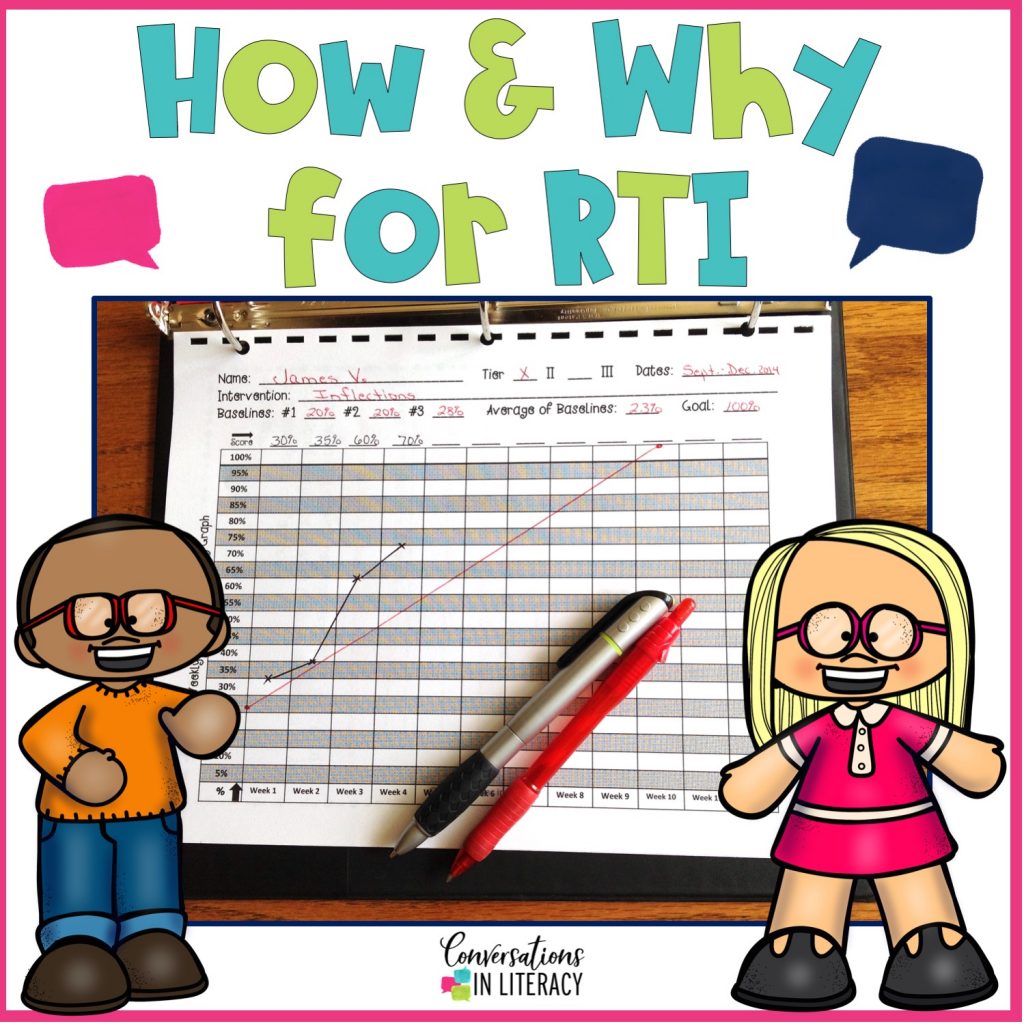
RTI (Response to Intervention) seems move people in opposite directions. Either teachers and administrators love it when RTI is implemented well or they hate RTI and feel that it is worthless and time consuming. I am the RTI coordinator for my school. I feel that RTI is so worth it and can help students be successful where before they were not meeting benchmarks.
We are going to begin a short blog series on RTI- the How and Why for RTI. If RTI is implemented correctly and teachers are supported in carrying out RTI interventions, it is definitely worth it and can bring so much success for students.
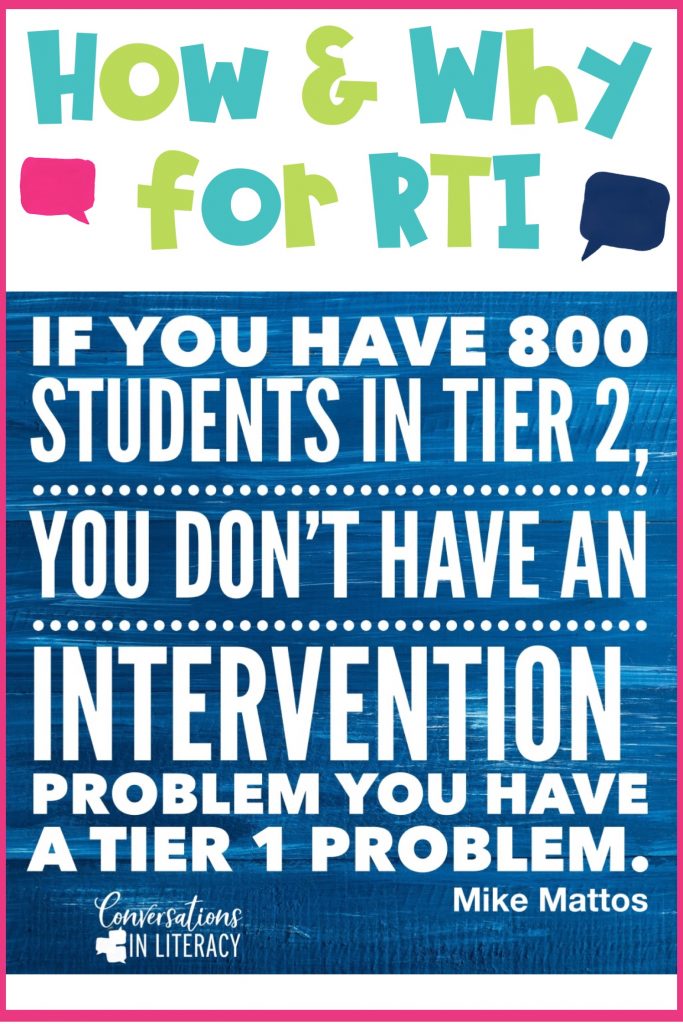
All student are technically in tier I of RTI. Tier I must have a strong core curriculum and will typically be able to meet the needs of about 80% of the students in the regular classroom. If you have a much higher percentage of students not being successful in Tier I, the first thing that needs to be looked at is the core curriculum.
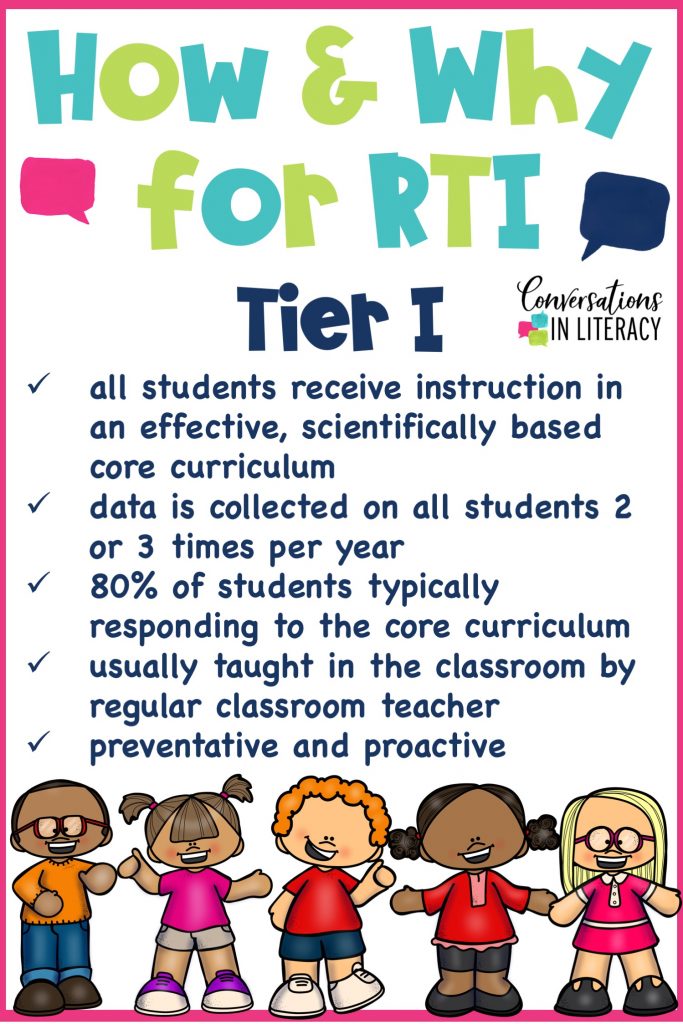
Looking at the core curriculum does NOT mean that teachers are not doing their jobs! It may mean that someone higher up has made a decision on what “program” teachers must use. Or maybe the methods being used are good methods but there isn’t buy-in from the teaching staff. Is it too hard, too new, lack of materials, or too little training to be effective?
If you are in this situation, get together with other like minded teachers and try to come up with some ideas of why this is happening. Then maybe approach your administration with your findings to see if changes can be made to help the students be more successful.
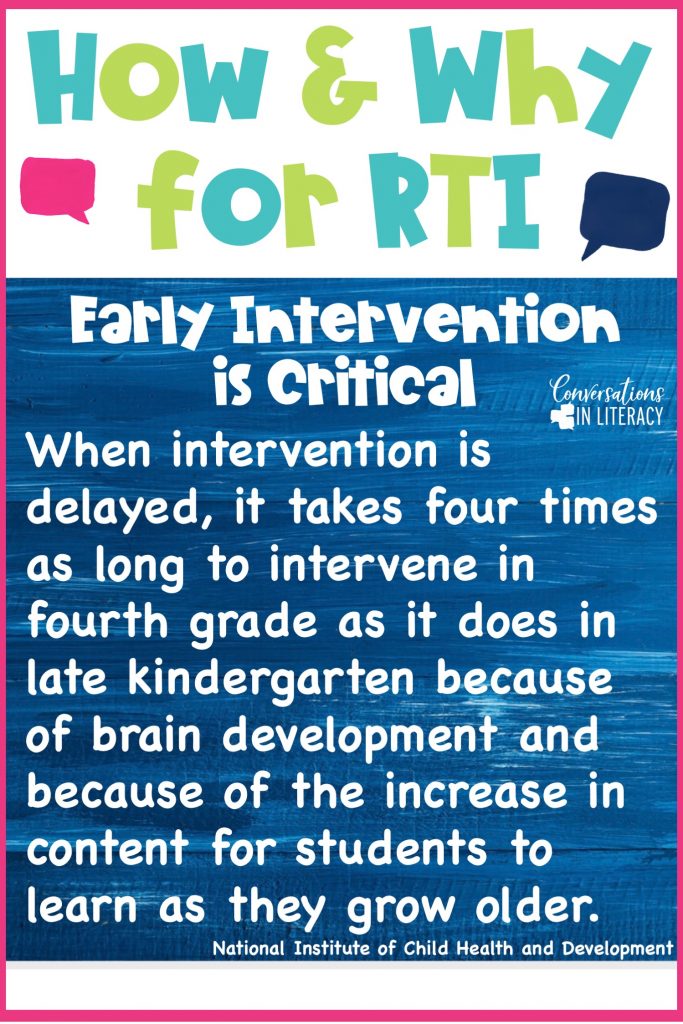
Early intervention is indeed critical! I would much rather intervene right away in kindergarten than wait until 3rd or 4th grade. By then, the student can have fallen far behind and it is much more difficult to correct and get the student back on track.
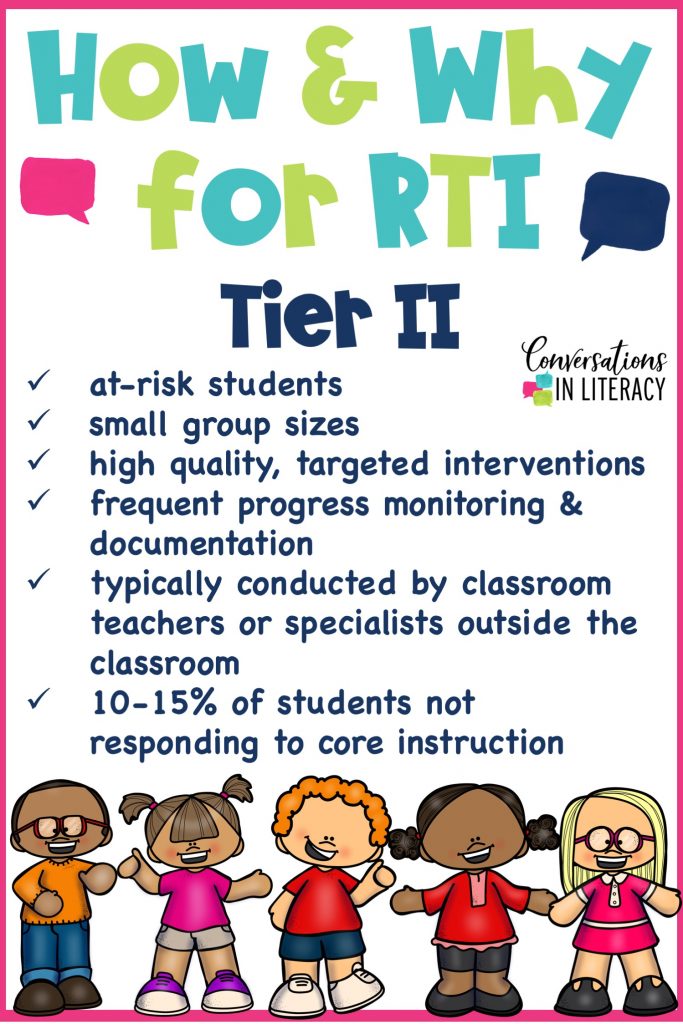
At our school, in the lower grades, kindergarten and first grade, we keep a close watch on students who may be falling behind. We conduct universal screenings, phonological awareness and phonics assessments three times per year. Our thoughts are to catch it early and intervene early.
Reading specialists and reading teachers pull students out of classrooms in small groups to instruct in weak areas and we progress monitor every week. We are organized and systematic in how we run our RTI program to give students every chance to succeed.
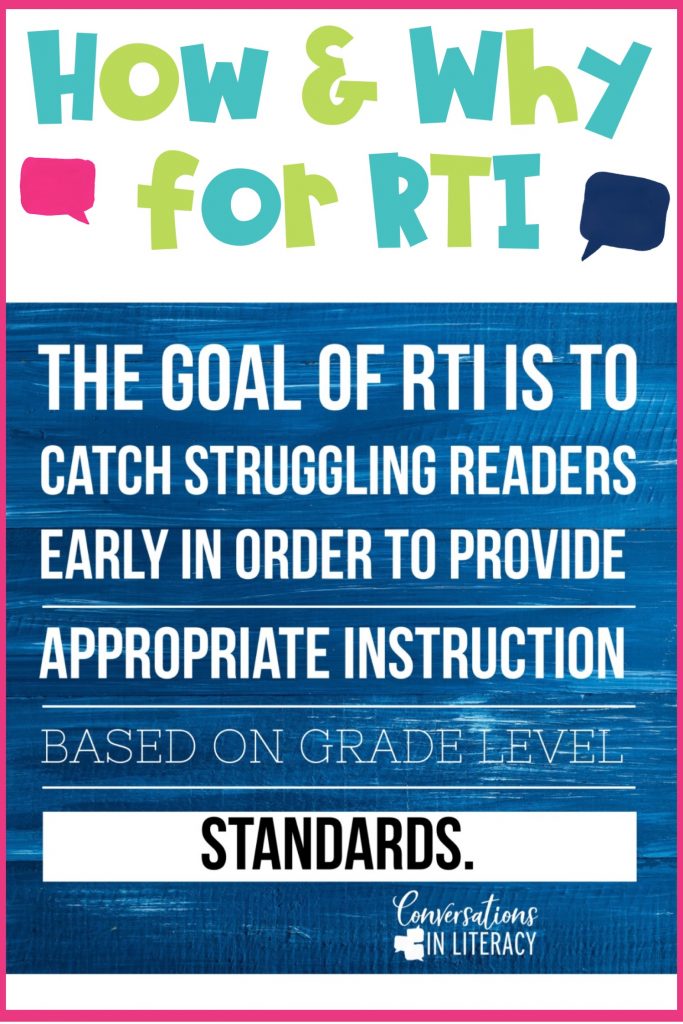
One of our goals is to intervene early and move students as quickly as we can towards grade level standards. We take them where they are and fill in the gaps.
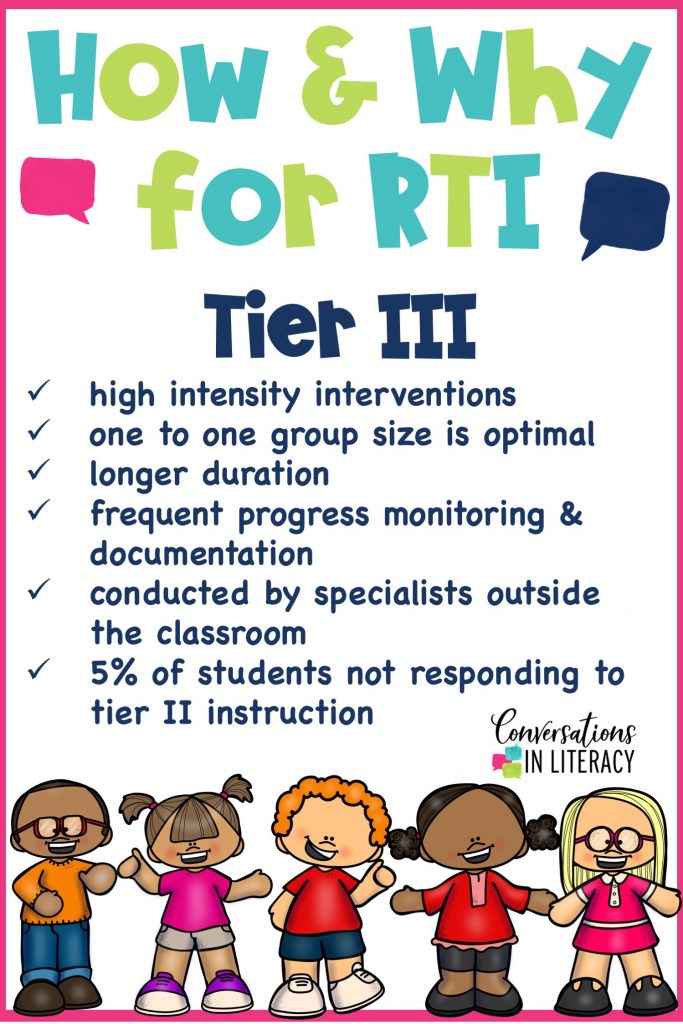
Tier III of RTI should be conducted by the highly trained for the most needy students in reading. One to one ratio is best, but two to one if the students are closely matched in areas of need can also work. This tier is more intensive, using a more intensive method and for a longer time period. Lesson plans are well thought out and executed to help these striving students towards success!
I truly hope RTI is a success in your school! I have heard lots of stories and received lots of emails about how to start change in schools. Teachers want students to find success and the best way to do that is to have an RTI program that is organized with clear cut benchmarks. Along with this, planning out how to fill in gaps is essential!
If you are needing help with RTI documentation and activities, we have many that can help you!
Click here to find easy to set up and implement data forms and graphs binders.
Click here to find resources that may help your striving readers towards success.
Please leave your questions, struggles and success stories in the comments! We would love to know about them!

We are trying to restructure our RTI program to be more successful. The largest problem we have at this point, is that students are in “Tier 2/Tier 3” for many months or possibly years. Do you see this with your students? If not, how do you successfully rotate students in and out of tiers? We are also talking about hitting Kindergarten and First grade hard to catch that early intervention. Curious….
Hi Kim! We have set time frames for RtI in our school. Tier II lasts for 10 weeks and Tier III for 12 weeks. After this time frame is completed our RtI team meets together to look at the data and the amount of progress of each student in these tiers. We vote on whether students stay in their current tier, move up, move down or are referred for assessing by the special education team. This keeps students from just being stuck in one tier. We also believe in early intervention. So much easier when they are younger than when they get older. Hope this helps!
I find that in my school, our RTI coordinator isn’t using teacher inputs to rotate kids in and our of tiers. I don’t think students should be stressing out about missing classroom time and “standardized test scores” more than their ability to read. I find she uses MAP and F&P to justify why she is keeping kids instead of just listening to the interventionists. Is it normal for tiers to not be fluid? I thought RTI was supposed to be a flow like process of in and out.
Hello Kim! The tiers are fluid after a period of time at our school. We set our time frames and have specific criteria for students to meet to be recommended for RtI. Hopefully this information helps! Thank you for stopping by our blog!
Hi, I am a new reading Interventionist at my school and I am struggling to know where to start. I will be doing a Tier II intervention pull out program for grades 3-5. Everything I have found online is for students who are struggling readers, but I have not found anything to help me structure my classroom for students who are struggling with skills and comprehension. Do you have any suggestions to lead me in the right direction?
Hi Stacy! Could you please email me at [email protected] ? I think that would be easier than commenting back and forth on here. Congratulations on your job! One place to start would be with Jan Richardson’s latest book on guided reading.
I graduated with my Masters In Literacy last year and I want to apply for a RTi coordinator position at a new school. Do you feel
I’m over my head, perhaps teach rti first???
Hi Terria! Thank you for emailing me. Congrats on earning that master’s degree! I will email you back. 🙂
Hi, I sent a proposal to be a workshop facilitator in my district this year. My workshop title is RTI in Literacy..RTI in a nutshell.. it was appropriate.
So many of my colleagues are at a lost when it comes to RTI. I do well iny classroom and I work the reading interventionist each summer.. I’m working on my masters in language and literacy. However I’m struggling to know where to start in trying to find Tier II intervention guides, points, and practical information to share with our K-5 teachers. Most things I’m is for students who are struggling readers. Where can I can resources and information that teachers can use to help students in Tier II who are struggling with skills and comprehension. Do you have any suggestions to lead me in the right direction?
Hi Sharon! The best way to decide what students need is to screen them in skills (phonemic awareness, phonics, fluency, comprehension, etc..) and then start where the student has gaps and start moving them forward with specific, sequential teaching. It absolutely helps to have someone who is willing to look at the data and decide and give that information to the classroom teachers. Some schools use computer programs for testing and the program usually will give you the data on this. It isn’t always the. most accurate but it is used a lot and a place to begin. You can also look to see what your state recommends to use for testing. I used screenings like PAST, PASS, QPAS, etc… After giving screenings to below grade level students, you can determine what skills students need to begin with to fill in learning gaps. You can begin a collection of activities and ideas for those areas- phonemic awareness, phonics, fluency, comprehension) to have on hand for other teachers if they need help. You can find free ideas on Florida Center for Reading Research to get you started.
Hope these ideas help you and that you have a wonderful school year! You are welcome to email me at [email protected] if you have questions.
Should all students be put on a computer progrsm, whether they are tier 1, 2, or 3??